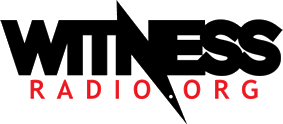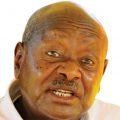SPECIAL REPORTS AND PROJECTS
World Bank Group – International Monitory Fund its role in the global land grabs
Published
7 years agoon
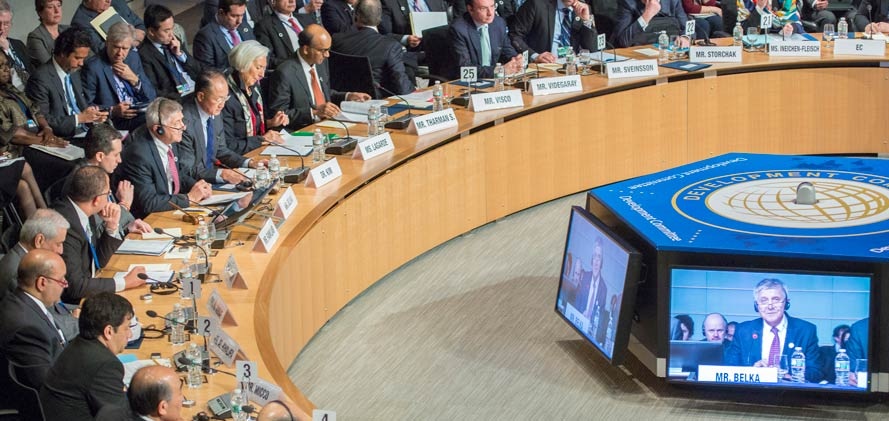
By witnessradio.org/farmlandgrab.org
The World Bank Group between 2006 and 2016, has directly funded at least 14 large land deals spanning at least 900,000 hectares and provided securities financing to over 700,000 more in Africa, Latin America, South and South East Asia.
Most notorious of these are the landgrabs funded by the IFC. In Guinea, IFC has financed resource extraction projects amounting to US$140M in loans, which resulted to the displacement of 150,000 people. Hundreds of thousands more face the risk of cyanide pollution in their water sources. Similarly, IFC has funded mining operations in Myanmar [xvi] that displaced 16,000 farmers and indigenous Karen peoples in 23 communities.
In more than 30 countries – mostly in the Global South – the IFC has been bankrolling landgrabs through financial intermediaries. Private equities and commercial banks fund these lucrative land deals that have adverse social, political, environmental, and humanitarian impacts [xvii].
The IFC has been setting up Climate Funds and ‘green bonds’ to supposedly leverage private sector money towards environmental protection and climate change mitigation. Ironically, almost 70% of these projects are power generation projects such as dams and coal powered power plants in 12 countries including Bangladesh, Cambodia, Ghana, Philippines, and Sierra Leone [xviii]. On the other hand, 46% of area in land grabs are for extractive mining of metals and oil explorations in 15 countries including the Mekong Delta, Egypt, Zambia, Uganda, South Africa and Colombia. In nine countries, large-scale plantations of palm oil, rubber, cotton, and sugarcane are also a huge part of the land grabs in Indonesia, Mozambique, Ethiopia, and Gabon [xix]. “Green” funds supposedly predicated at mitigating climate impacts are grabbing forest lands, burning them and transforming them into plantations!
Despite peoples’ movements and civil society groups’ condemnation of IFC, it has increased agriculture and land-directed “investments” throughout the years [xx]. The World Bank itself lied through its teeth three years ago when it said that only 2% of IFC’s investment in agriculture and forestry had “any component related to land acquisition” [xxi].
More than the rhetoric of achieving food security, landgrabs are motivated by backing financial instruments and assets of the rentiers of financial oligarchs. Since the global financial meltdown of 2008, financial institutions, led by US-based asset-holding corporations and institutions [xxii], are becoming the largest actors behind global land grabs.
While IFC provides the funding including through direct and indirect equity investments, another for-profit arm of the World Bank Group insures landgrabbing investors – the Multilateral Investment Guarantee Agency (MIGA). MIGA provided political risk insurance to several asset-holding corporations and pension funds, including the US$65M it extended to sugar plantation expansion in Mozambique and the US$50 million cover for London-based Chayton Capital in grabbing 20,000 hectares of land in Zambia [xxiii]. MIGA is systematically betting against national interest of host peoples against nationalization, conflict, and acquisition contentions.
While not necessarily exhaustive, much discussion has been done by civil society organizations in the past few years on the role of direct investments and sub-investments of the World Bank Group in landgrabbing. Little have been said on the much larger role it played to facilitate the global land rush – the neoliberal globalization and corporatization of development.
Sowing the seeds of landgrabbing
The IMF-World Bank played a critical historical role in enabling landgrabs in the Global South.
The IMF-World Bank’s neoliberal restructuring of national economies in the late 70’s to early 90s under the structural adjustment program (SAP), and later on the US Treasury-led Washington Consensus, have laid the grounds and sowed the seeds of this massive scale of foreign and foreign-funded landgrabbing.
For decades, the IMF-World Bank Group imposed market colonialism and economic genocide through conditional loans and the IMF shadow program/advisory services as prerequisites of said loans. The triumvirate of market liberalization, deregulation of primary resources and services, and privatization of State assets and facilities forced through so-called adjustment loans have drastically diverted resources away from the domestic economy [xxiv]. On the other hand, it funded export crop production to suit the demand of the innocuous ‘world market’ increasingly dominated by US and EU-based agribusiness monopolies.
Most devastating of such ‘advisory services’ concern land tenure and governance. National legislations on land rights are often developed under the direct scrutiny and advisory services of the Legal Department of the World Bank. The World Bank advocated a market-assisted land reform program predicated on “comparative advantage” of land use, when in practice, it led to reconcentration of lands and evaded intact land monopolies altogether [xxv]. In almost all cases, privatization of agricultural lands is structured in a way that land sales are diverted to debt servicing [xxvi].
In Peru, where more 80,000 hectares of lands were grabbed in the last decade, the 1991 Land Law pushed by the Inter-American Development Bank (IADB) and advisory services of the World Bank required a minimum of 10 hectares as a unit of ownership. This encouraged the centralization of lands to the hands of a few while the parceleros (small farmers) were forced to either sell or give up control of their lands to landlords [xxvii].
In India, the abolition of land ownership ceilings was one of the explicit conditions of World Bank loans.
In sub-Saharan Africa, the World Bank pressured the states in the late 90s to privatize the agricultural lands, which resulted in carbon copy Land Laws that sold the peasant lands – mostly without consent and consultation and often violent — or have leased it out to international agribusinesses for 50-99 years.
Similar laws predicated on a redistributive model have been done in Brazil, Philippines and Colombia where supposedly redistributive land reforms incentivized land monopolies and created conditions for mortgage forfeitures, resulting in a larger landless populace than before. By 1996, the World Bank adopted an aggressive policy of full private ownership of agricultural lands and land market development programs.
The World Bank also facilitated in developing national customary land laws in its “plural land tenure and governance” policy, which privatized the control, if not the ownership, of ancestral lands of Indigenous Peoples and forests, assigning them lease and market value.
The SAP radically eroded the capacity of developing nations to produce staple food domestically. The currency devaluation in combination with the unification of exchange rates and controls have provided an impetus for the growth of commercial farms. This and the deregulation of staple food prices and liberalization of food imports have removed the protection to farmers producing food crops and forced countries to import-substitute crops. In sub-Saharan Africa, privatization of roads and deregulation of oil resulting to high transportation costs crippled farmers selling their food in the local market, which competes with dumped agricultural products from the Northern countries. In other developing countries, irrigation was privatized through World Bank’s policies on water property rights and markets.
Monoculture cropping was also the war cry of the World Bank as heavily subsidized TNCs from the US and EU encroached on privatizing local seed banks, seizing the opportunity of peasant ruin in the countryside. It restructured farming relations from local food production to export-oriented commercial farming.
As a result, the SAP enabled the proliferation of global monopolies that control food production, inputs, and distribution while starving the farmers from the developing world. The establishment of the World Trade Organization (WTO), the World Bank’s brother-in-arms against food sovereignty, has put the denationalization of food systems on overdrive.
Since WTO, profits in the globalized era are sought in increasingly speculative and fraudulent activities [xxviii], and agriculture is specially not exempted. The footprint of speculative activities in the global land rush, especially in 2008 onward, pushed the prices of food staples and led to the food riots and conflicts, which led millions of people in the developing world in a spiral of hunger and poverty [xxix].
In developing countries, the World Bank demanded, the phasing out of agricultural subsidies and the privatization of State seed and fertilizer facilities through the SAPs to “create space for the private sector”. So now, it suffers voluntary amnesia whenever it talks about the “gaps” in agricultural funding supposedly filled in by the private sector, since it created that “gap”.
Maximizing Finance for Development:
Incentivizing Land Grabs and Corporatization of Agricultural Development
The IMF-World Bank in its policy paper “Maximizing Finance in Development in Agriculture Value Chains”, which it hypocritically titled “The Future of Food”, further elaborates the latest installment of IMF-World Bank’s longstanding attack on people’s right to food and food sovereignty, and the offensive advance of greater corporate takeover of agriculture and corporatization of agricultural development.
In the paper, the World Bank describes crowding in funds from the private sector as the all-encompassing key in closing the “gap” in funding for agricultural development. While the paper discusses and hides behind the “alignment” of agricultural development to strategic goals of “poverty reduction” and “providing better jobs and boosting shared prosperity”, it paints a plan to further denationalize food systems and increase financialization in food production, control, and distribution, which divert funds for farmers to incentivizing and de-risking TNC investments and monopoly control.
Advocating Use-Certificates and Access to Rental and Land Markets in lieu of right to land. In continuing its role as an enabler of landgrabbing and further absolving itself of culpability, the paper points out that “weak government policies on land tenure and governance” [xxx] cause risks of landgrabs. In the same breath, the IMF-World Bank calls for national policy reforms advocating more secure use-certificates to minimize the risk of agricultural investments for financial actors. This is doublespeak for the further erosion of the already denied rights of farmers and Indigenous Peoples to land and resources.
While it laments that only 10% of lands in sub-Saharan Africa are registered, it advocates the Ethiopian use-certification land reform that led to the land grabbing of between 2.5 to 2.71 million hectares of land in Ethiopia, which is up to 58.2% of total land area suitable and available for agricultural production, between 1992 and 2010 alone. This comes to no one’s surprise as IFC enabled a 110,000-hectare plantation landgrab in Ethiopia last 2010, where it provided US$150 million loan to ICICI Bank, the landgrabber Karuturi Global’s investor. The IMF-WB continues its efforts in eroding policies on peoples’ right to land through the Land Governance Assessment Framework.
Guarantee, award, incentivize TNCs and monopolies while sponsoring neglect of farmers and domestic food production. The paper promotes the rollback of any State support for farmers and national food production. It calls for a “shift in public policies from direct agricultural support towards improving private sector access to risk management instruments for agriculture”. This shift means indiscriminate phasing out of subsidies to farmers, privatization of state assets related to food production, and the “decoupling of subsidies” away from staple foods as these “crowd out” private sector participation. Moreover, it also calls for an exit of State banks and state capital in funding, lending, and insuring small farmer and staple food production to “create spaces” for commercial banks and international private financing.
These deregulation policies in agriculture coupled with further liberalization, redolent of the disastrous SAPs, will further cripple national capacity to produce food and mitigate world food price spikes. As it is, public spending in agriculture in the global south is on a four-decade long decline [xxxi] in relative terms. In fact, in the south of Sahara, where more than 80% of people depend on agriculture, public spending declined by 25% in the last three decades [xxxii]. A more significant decline was also noted in the Latin America and the Caribbean. Financing takes up an increasing amount of public spending in agriculture, while less and less in direct subsidies to farmers [xxxiii]. A World Bank review attributes this shift to “an era of policy reform” towards market liberalization [xxxiv].
On the other hand, the World Bank has no qualms in subsidizing the entry and entrenchments of agribusiness monopolies in the Global South. In 2009, IFC gave a US$75-million equity infusion to the US$625-million investment vehicle Altima One World Agriculture Fund. The Altima Fund owns majority shares of the El Tejar, the soybean monopoly in Argentina. This then enabled El Tajar to position itself, through more than 200,000 hectares in land grabs, as the largest farm operator in Argentina, Bolivia, Uruguay, and Brazil [xxxv].
Rising prices and trade liberalization also catalyze land grabs. In Cambodia, for example, there is a major uptick in land grabbing due to the “Everything but Arms Treaty” that was signed with the EU. Under the treaty, Cambodia can export sugar duty free.
The paper also prescribes Public-Private-Partnerships (PPP) “wherever possible”, a project funding model worse than privatization. PPPs in agriculture lead to user fees in irrigation and rural infrastructure, opening up land, water extraction, genetic and natural resources to the private sector exploitation; changing national seed laws; lifting plant variety protection, even accommodating the propagation of questionable crops such as those genetically modified; giving up national R&D to the control of agribusiness TNCs and allowing their techno-fixes to low productivity; and changing concepts of land rights and agrarian reform, among others.
In stark contrast to the prescribed neglect to farmers, the paper advocates the diversion of the meager funds to shielding agribusinesses from risks of nationalization, expropriation, disputes, conflict and political risks, even calamities – for countries to bet against their farmers and agricultural workers!
As if not enough, the paper advocates a private sector-led and -centered diagnostic systems in agricultural development – adding control over “assessment framework” and “diagnosis” to the arsenal of corporate power. As it is, the “private sector” is simultaneously the plaintiff, the perpetrator, the lawmaker, the lawyer, and the judge in disputes. Of the 855 known ISDS [1]cases, where 542 were filed in the World Bank’s international investment dispute settlement ICSID [2], 61% were decided in favor of the investor and only 39% in favor of the state[3] [xxxvi]. In fact, the IFC and the World Bank have consistently invoked its “absolute immunity” in class action lawsuits directed against them over the past few years[xxxvii].
Unsurprisingly, the paper advocates as well for the “harmonization” of seed laws. These laws, as made clear by farmers in Africa, are violating the rights of people to seed and seed biodiversity — supporting policies for privatization of seeds and criminalization of seed saving and strengthening the position of international seed monopolies like Bayer-Monsanto and DuPont.
Further deepening of financialization of food systems and increasing the speculative nature of land and food markets.Financialization has been pushing prices of food and fueling the landgrabs since 2008. In fact, from 2004, IFC has funded US$4.55 billion in loans and grants to financial intermediaries linked to over hundreds of projects that resulted in landgrabbing, displacement of peoples, ruin of livelihood, and environmental degradation [xxxviii]. These financial intermediaries, which include banks, insurance companies, microfinance institutions, and private equity funds, received the biggest share of World Bank’s investments through the IFC [xxxix].
While the World Bank advocates for the “deepening of financial markets in developing countries” and in agriculture, it leaves out in convenience the fact that global agricultural markets today are already riddled and closely entangled with increasingly speculative funds, bonds, derivatives, and other financial instruments like the commodity index fund which drives agricultural inputs and product prices upward – a double burden for farmers.
As already mentioned above, the IFC has also been setting up of green funds and climate change mitigation funds that has predated on forests and Indigenous Peoples’ rights to land and self-determination. The IFC boasts that its investments in climate financing have reached US$18.3 billion and mobilized $11 billion in private sector funding for climate since 2005 [xl] — including 109 green bonds.
Since 2011, IFC has invested a total of US$246.5 million [xli] in RCBC, a Philippine-based bank, including at least US$22.5 million in IFC’s climate loans [xlii]. RCBC has been funding the construction and operation of 20 coalfired power plants in the Philippines, which have displaced and affected at least 28 communities of farmers and fishers.
Killings amid poverty and landlessness
Growing landlessness and soaring rural poverty are the clear and inevitable effects of IMF-WB neoliberal policies. IMF-WB’s decades of policies of auctioning off agricultural lands to land markets and their promotion of market-led land reforms and speculation have marginalized large portions of already impoverished farmers in the global south in favor of local elites and international investors. [xliii]
Commodification of agricultural and forestlands has led to greater concentration of land in the hands of local elites while systematically excluding small farmers [xliv]. Large haciendas and latifundia in Asia and in Latin America remain intact and have grown and evolved over the last century.
In most of the developing countries today, 95% of farms being tilled by small farmers are below 5 hectares. However, these farms occupy only 66 to 75% of the total arable lands[xlv]. This means that the remaining 5% of farms are large landholdings where 25 to 33% of the total arable lands are concentrated. In the Middle East and North African region, 80% of farms occupy only 20% of total agricultural area. While in Latin America, the largest 10% of farms hold 60% of total agricultural area [xlvi]. In the Philippines, 57% of farms cover only 12% of total agricultural lands [xlvii].
The intense concentration of agricultural lands in the hands of landlords and corporations indicate how massive landlessness is among farmers and agricultural workers. The total of 12 million farmers displaced by reported land grabs in the last decade add to the already high number of landless in the global south. In India alone, 41.63% of rural households are landless, which translate to 307 million people [xlviii].
In addition, neoliberal schemes such as contract growing and other lease-type agreements wrest the control of farms from small farmers and hand it over to agribusiness ventures. Thus, even the landed small farmers end up as agricultural workers in their own land.
Land grabs in the past few years are also becoming more violent and heavily militarized as more and more communities resist forced displacement. The IMF-WB itself is complicit in the piling bodies of farmers and land rights activists in the Global South.
For example, in Honduras, one of the deadliest countries on earth for farmers and land rights activists, the IFC gave a loan of US$15 million to the Dinant Group in 2009. The Dinant Group, owned by the wealthiest man in the country and one of the biggest landlords in the Aguan Valley, killed more than 36 farmers in 2011, in the wake of its way to being Honduras’s biggest oil palm plantation operator – bagging 60% of palm oil exports in the country [xlix]. The World Bank has profited off farmers’ murders.
Agribusiness and mining landgrabs total the greatest number of extrajudicial killings, according to reports. Not only are small farmers neglected in policy making; the human rights of peasants and land rights defenders are also disregarded and even attacked by the state. In fact, in the 207 reported global killings of farmers and land rights defenders in 2017, at least 53 were state-sponsored.
Towards peoples’ right to food and food sovereignty
But amid all these attacks, the farmers, Indigenous Peoples, and other rural peoples’ resistance against landgrabbing is also gaining ground. In fact, there are numerous cases of landgrabs that were delayed, thwarted, and even denied because of the communities’ determined assertion of their right to land and resources. While there are many factors in the relative slowdown of global landgrabs over the last three years [l], rural peoples’ determination to expose, directly confront and challenge the land grabbers has made a significant impact.
In the Philippines, for instance, farmers and Indigenous Peoples are standing their ground in lands that are being grabbed for oil palm plantations, for mining and coal-fired power plants, and for ‘green cities’, among others. In the province of Misamis Oriental in Mindanao, Indigenous Higaonan people continue to keep at bay the state-backed ABERDI [4] company from displacing them in 530 hectares of ancestral lands earmarked for oil palm plantation expansion. Retaking lands from landgrabbers and centuries-old haciendas through what we call “bungkalan” or land occupation and collective cultivation also marks the resistance of farmers and Indigenous Peoples in various provinces of the Philippines like Negros, Bohol, Bukidnon, Tarlac, Batangas, Samar, Sorsogon, and Davao[li].
In West Bengal, India, Singur peasants deployed a combination of legal, on-ground, and political actions against manufacturing giant Tata Motors over 500 hectares of agricultural lands. The historic 2016 decision of the West Bengali court in favor of the farmers and the unwavering resolve of the Singur peasants have swept the region. It catalyzed a wave of peasant struggles and prompted land reform amendments in the region.
In Brazil, land occupation movements led by the Liga de Campesinos Pobres in Pau D’arco, Para, North of Brazil and in the Beirada Farm in Manga remain a bulwark of peasant power against mining and agribusiness landgrabbers. Despite more than 40 farmers and activists already killed and hundreds more arrested in the defense of their lands last year alone, the Brazilian farmers continue to thwart landgrabs and persist in reclaiming their lands. In Santa Elina, poor and landless farmers took over the old Hacienda Sta. Elina and are now collectively cultivating the “blood stained” lands they have for decades been fighting for.
Today as the IMF-World Bank and their client countries unite to find new ways to plunder our lands, exploit and oppress our rural peoples, and take away the peoples’ rights, we raise our clenched fists as one and reaffirm our resolve to defend our land and resources, to stop further corporate takeover of development, and to reclaim our rights to land and food sovereignty.
Stop Land Grabs! Reclaim our rights and future!
Fight for Genuine Agrarian Reform!
Stop killing farmers!
Assert our right to food, land, and food sovereignty!
Junk IMF-World Bank’s neoliberal agenda!
Shut Down the IMF-World Bank!
Rafael Mariano is the Chair Emeritus of Kilusang Magbubukid ng Pillipinas. He was the former Secretary of the Philippine Government’s Department of Agrarian Reform (DAR).
Notes
https://peoplesglobalconference.weebly.com/resource1.html#_ftnref1” style=”font-weight: 600; trans
Related posts:
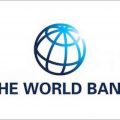
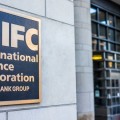 Supreme Court rules that World Bank Group can be sued in US Courts in historic decision
Supreme Court rules that World Bank Group can be sued in US Courts in historic decision
 African Development Bank decides not to fund Kenya coal project
African Development Bank decides not to fund Kenya coal project
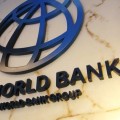 World Bank: End the Enabling Business of Agriculture Program and its Land Indicator or the poor will perish
World Bank: End the Enabling Business of Agriculture Program and its Land Indicator or the poor will perish
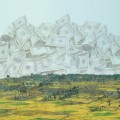 World Bank’s new scheme to privatize land in the developing world exposed
World Bank’s new scheme to privatize land in the developing world exposed
You may like
-
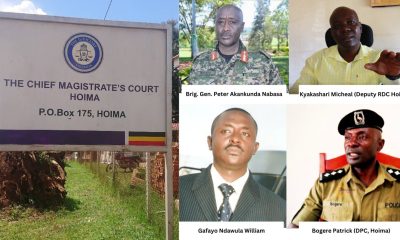

Private prosecution: Army General, police commander, presidential representative and others to be charged with over seven offenses committed while illegally evicting locals to give way to EACOP.
-
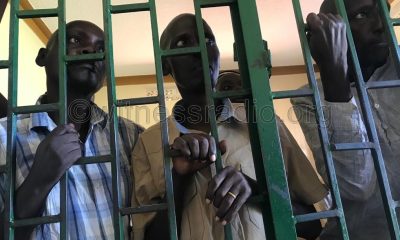

Six cattlemen opposed to the Tilenga oil project-related forced land eviction have been granted bail but will remain in prison…
-
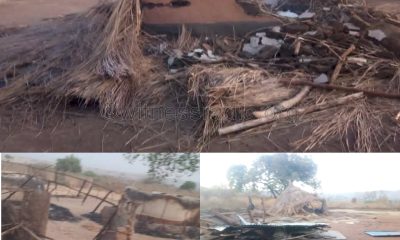

The district security committee continues to defy gov’t’s directive to return locals to their land 48 days later.
-
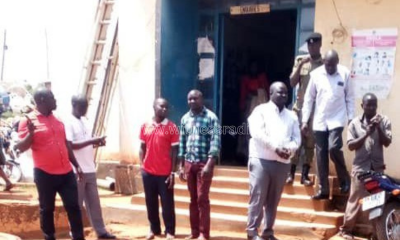

State House Anti-Corruption Unit nets a surveyor implicated in Mubende district land-grabs
-
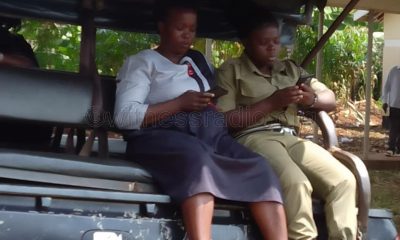

Kiboga district senior lands officer is arrested and detained over land fraud.
-
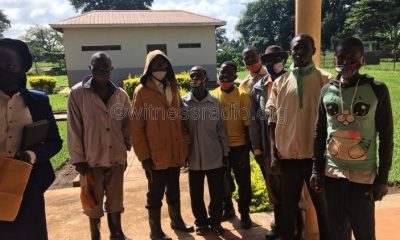

Community land rights defenders that have been on trial since 2020; are set to return to court this January.
SPECIAL REPORTS AND PROJECTS
‘Left to suffer’: Kenyan villagers take on Bamburi Cement over assaults, dog attacks
Published
3 months agoon
March 22, 2025
- The victims are aged between 24 and 60, and one of them has since passed on.
- Many were severely injured and hospitalized following brutal attacks, unlawful detention, and physical assault by Bamburi’s security personnel.
Editor’s note: Read the petition here.
Their hopes for justice seemed to be slipping away after initially taking on a multinational corporation and failing to hold it accountable for the brutal injuries they suffered.
The death of one of their own cast a shadow of despair, making it seem unlikely that they would ever bring the corporation to justice for the crimes they alleged.
However, 11 victims of dog attacks, assaults, and other severe human rights violations are now challenging Bamburi Cement PLC’s role in these abuses in court.
They are represented by the Kenya Human Rights Commission (KHRC), which on January 29, 2025, filed a legal claim before a constitutional court in Kenya, seeking to hold the multinational accountable for the harm suffered by the victims—residents of land parcels in Kwale that Bamburi claims ownership of. KHRC worked with the Kwale Mining Alliance (KMA) to bring this case.
The victims, aged between 24 and 60, include Mohamed Salim Mwakongoa, Ali Said, Abdalla Suleiman, Hamadi Jumadari, Abdalla Mohammed, and Omari Mbwana Bahakanda. Others are Shee Said Mbimbi, Omar Mohamed, Omar Ali Kalendi (deceased), Abdalla Jumadari, and Bakari Nuri Kassim.
Bamburi had hired a private security firm and deployed General Service Unit (GSU) officers to guard three adjoining land parcels, covering approximately 1,400 acres in Denyenye, Kwale. The GSU established a camp on the land, which has historically been accessed by residents who have long used established routes to reach the forest and the Indian Ocean.
For decades, these routes provided them with access to resources such as firewood, crops, and fish, which they relied on for their livelihoods. However, five years ago, when they attempted to collect firewood, harvest crops, and access the ocean through the land, Bamburi accused them of trespassing. The company’s private guards and GSU officers responded with force, setting dogs on them and assaulting them.
Many were severely injured and hospitalized following brutal attacks, unlawful detention, and physical assault by Bamburi’s security personnel. These incidents occurred despite the lack of clearly defined boundaries and the fact that the traditional access routes had never been contested.
According to the petition, GSU officers and private guards inflicted serious injuries by kicking, punching, and beating the victims with batons. Those who were arrested were neither taken to a police station nor charged with any offense. Despite their injuries, they were denied emergency medical care.
These actions were intended to intimidate residents, prevent them from accessing the beach, and suppress any historical claims to the land, the victims tell the court. Local police in Kwale failed to investigate the abuses, visit the crime scenes, or arrest any of the perpetrators, they add.
Now, the victims are seeking compensation for these violations. They have also asked the court to declare that their rights were violated through torture inflicted by Bamburi’s guards and GSU officers. Additionally, they want the court to rule that releasing guard dogs to attack them during arrests constituted an extreme and unlawful use of force.
Source: khrc.or.ke
Related posts:
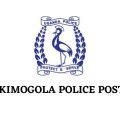
 Breaking: Over 600 attacks against defenders have been recorded in the year 2023 globally- BHRRC report.
Breaking: Over 600 attacks against defenders have been recorded in the year 2023 globally- BHRRC report.
 Kaweeri Coffee land grabbing case re-trial resumes as evictees continue to suffer gross human rights violations.
Kaweeri Coffee land grabbing case re-trial resumes as evictees continue to suffer gross human rights violations.
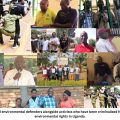 Criminalization of planet, land, and environmental defenders in Uganda is on the increase as 2023 recorded the soaring number of attacks.
Criminalization of planet, land, and environmental defenders in Uganda is on the increase as 2023 recorded the soaring number of attacks.
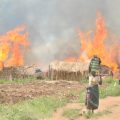 Local land grabbers evict villagers at night; foreign investors cultivate the same lands the next day
Local land grabbers evict villagers at night; foreign investors cultivate the same lands the next day
SPECIAL REPORTS AND PROJECTS
River ‘dies’ after massive acidic waste spill at Chinese-owned copper mine
Published
3 months agoon
March 22, 2025A catastrophic acid spill from a Chinese-owned copper mine in Zambia has contaminated a major river, sparking fears of long-term environmental damage and potential harm to millions of people.
The spill, which occurred on February 18, has sent shockwaves through the southern African nation.
Investigators from the Engineering Institution of Zambia revealed that the incident stemmed from the collapse of a tailings dam at the mine.
This dam, designed to contain acidic waste, released an estimated 50 million litres of toxic material into a stream feeding the Kafue River, Zambia’s most important waterway.
The waste is a dangerous cocktail of concentrated acid, dissolved solids, and heavy metals.
The Kafue River, stretching over 930 miles (1,500 kilometres) through the heart of Zambia, supports a vast ecosystem and provides water for millions. The contamination has already been detected at least 60 miles downstream from the spill site, raising serious concerns about the long-term impact on both human populations and wildlife.
Environmental activist Chilekwa Mumba, working in Zambia’s Copperbelt Province, described the incident as “an environmental disaster really of catastrophic consequences”.
The spill underscores the risks associated with mining, particularly in a region where China holds significant influence over the copper industry.
Zambia ranks among the world’s top 10 copper producers, a metal crucial for manufacturing smartphones and other technologies.
Zambian President Hakainde Hichilema has appealed for expert assistance to address the crisis. The full extent of the environmental damage is still being assessed.
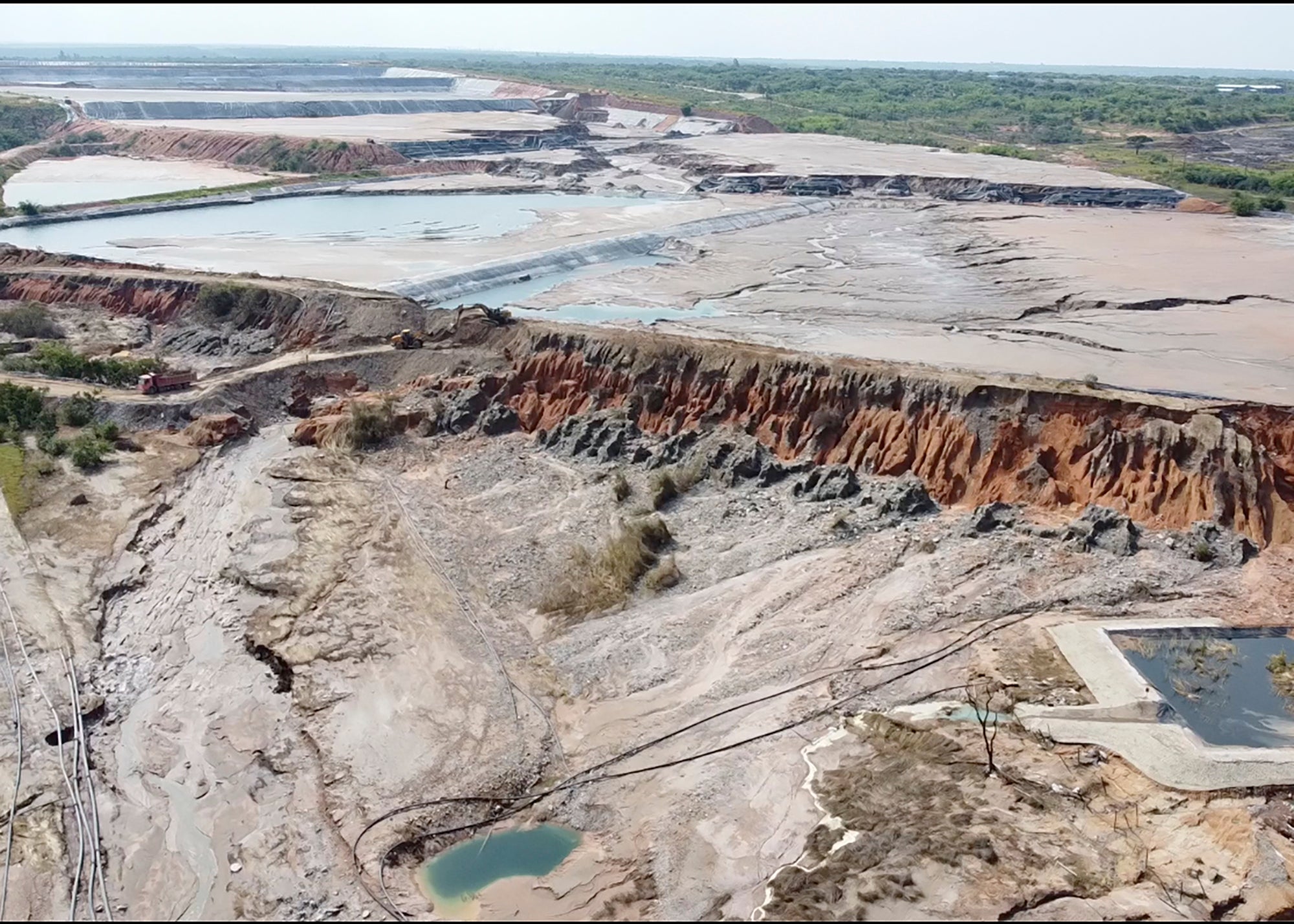
A river died overnight
An Associated Press reporter visited parts of the Kafue River, where dead fish could be seen washing up on the banks about 60 miles downstream from the mine run by Sino-Metals Leach Zambia, which is majority owned by the state-run China Nonferrous Metals Industry Group.
The Ministry of Water Development and Sanitation said the “devastating consequences” also included the destruction of crops along the river’s banks. Authorities are concerned that ground water will be contaminated as the mining waste seeps into the earth or is carried to other areas.
“Prior to February 18 this was a vibrant and alive river,” said Sean Cornelius, who lives near the Kafue and said fish died and birdlife near him disappeared almost immediately.
“Now everything is dead, it’s like a totally dead river. Unbelievable. Overnight, this river died.”
About 60 per cent of Zambia’s 20 million people live in the Kafue River basin and depend on it in some way as a source of fishing, irrigation for agriculture and water for industry. The river supplies drinking water to about five million people, including in the capital, Lusaka.
The acid leak at the mine caused a complete shutdown of the water supply to the nearby city of Kitwe, home to an estimated 700,000 people.
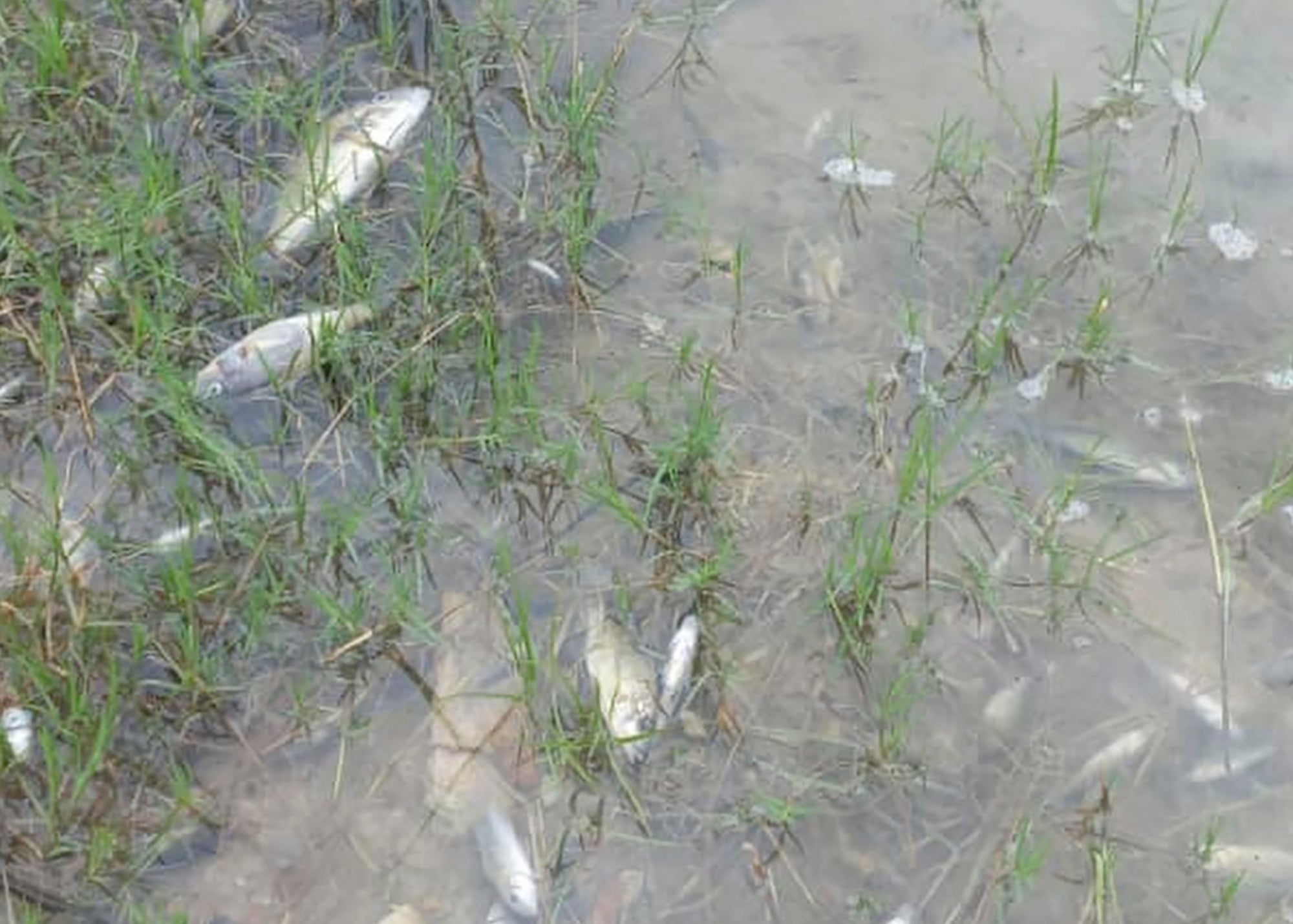
Attempts to roll back the damage
The Zambian government has deployed the air force to drop hundreds of tons of lime into the river in an attempt to counteract the acid and roll back the damage. Speed boats have also been used to ride up and down the river, applying lime.
Government spokesperson Cornelius Mweetwa said the situation was very serious and Sino-Metals Leach Zambia would bear the costs of the cleanup operation.
Zhang Peiwen, the chairman of Sino-Metals Leach Zambia, met with government ministers this week and apologized for the acid spill, according to a transcript of his speech at the meeting released by his company.
“This disaster has rung a big alarm for Sino-Metals Leach and the mining industry,” he said.
It “will go all out to restore the affected environment as quickly as possible”, he said.
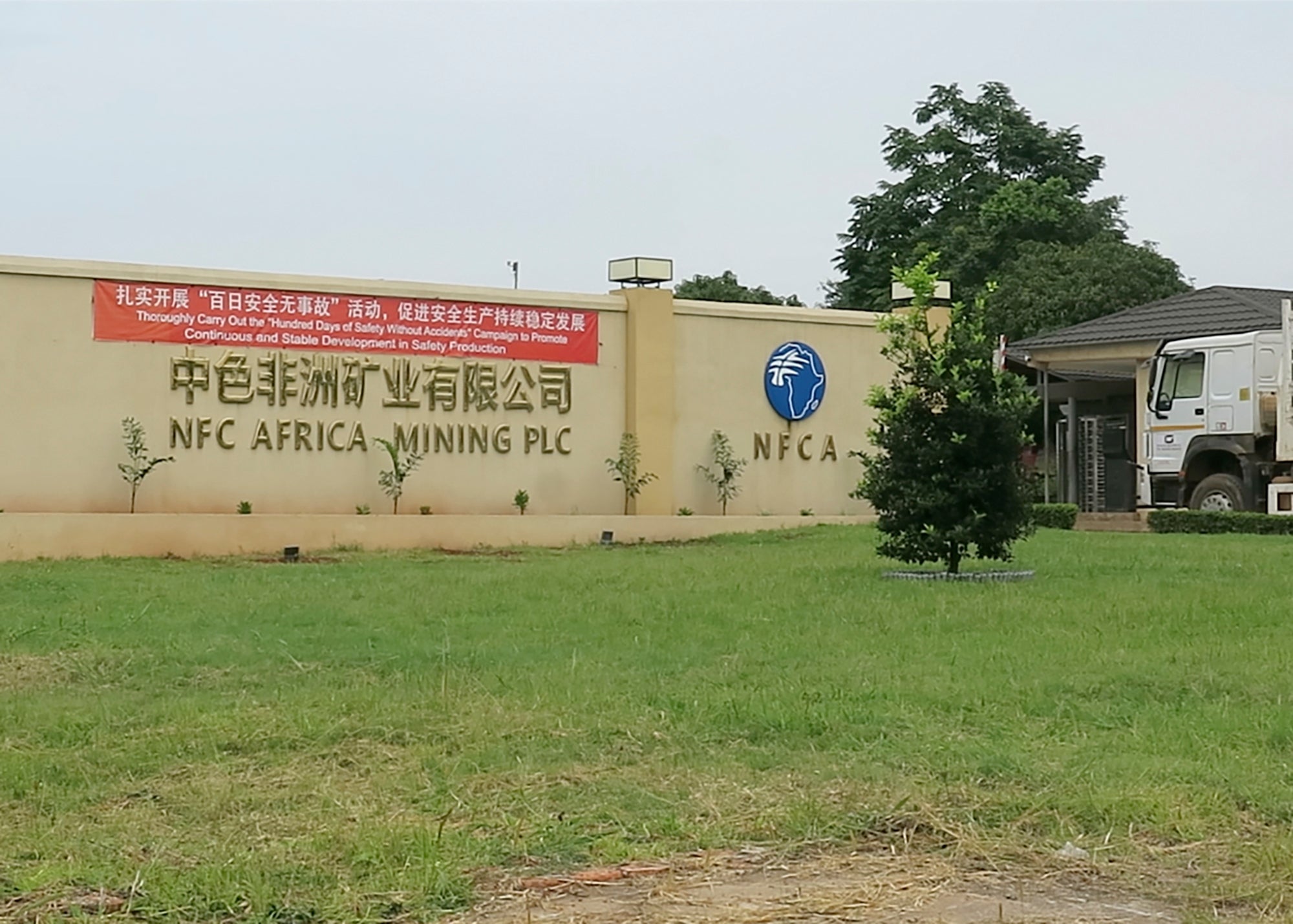
Discontent with Chinese presence
The environmental impact of China’s large mining interests in mineral-rich parts of Africa, which include Zambia’s neighbors Congo and Zimbabwe, has often been criticised, even as the minerals are crucial to the countries’ economies.
Chinese-owned copper mines have been accused of ignoring safety, labour and other regulations in Zambia as they strive to control its supply of the critical mineral, leading to some discontent with their presence.
Zambia is also burdened with more than $4 billion in debt to China and had to restructure some of its loans from China and other nations after defaulting on repayments in 2020.
A smaller acid waste leak from another Chinese-owned mine in Zambia’s copper belt was discovered days after the Sino-Metals accident, and authorities have accused the smaller mine of attempting to hide it.
Local police said a mine worker died at that second mine after falling into acid and alleged that the mine continued to operate after being instructed to stop its operations by authorities. Two Chinese mine managers have been arrested, police said.
Both mines have now halted their operations after orders from Zambian authorities, while many Zambians are angry.
“It really just brings out the negligence that some investors actually have when it comes to environmental protection,” said Mweene Himwinga, an environmental engineer who attended the meeting involving Mr Zhang, government ministers, and others.
“They don’t seem to have any concern at all, any regard at all. And I think it’s really worrying because at the end of the day, we as Zambian people, (it’s) the only land we have.”
Source: www.independent.co.uk
SPECIAL REPORTS AND PROJECTS
How Carbon Markets are Exploiting Marginalised Communities in the Global South Instead of Uplifting them
Published
7 months agoon
December 11, 2024
The billion-dollar fiction of carbon offsets
Carbon markets are turning indigenous farming practices into corporate profit, leaving communities empty-handed.
For Janni Mithula, 42, a resident of the Thotavalasa village in Andhra Pradesh, cultivating the rich, red soil of the valley was her livelihood. On her small patch of land grow with coffee and mango trees, planted over decades with tireless care and ancestral knowledge. Yet, once a source of pride and sustainability, the meaning of these trees has been quietly redefined in ways she never agreed to.
Over a decade ago, more than 333 villages in the valley began receiving free saplings from the Naandi Foundation as part of a large-scale afforestation initiative funded by a French entity, Livelihoods Funds. Unbeknownst to Janni and her neighbours, these trees had transfigured into commodities in a global carbon market, their branches reaching far beyond the valley to corporate boardrooms, their roots tethered not to the soil of sustenance but to the ledger of profit and carbon offsets.
The project claims that it would offset nearly 1.6 million tonnes of carbon dioxide equivalent over two decades. On paper, it is a triumph for global climate efforts. In reality, the residents’ lives have seen little improvement. While the sale of carbon credits has reportedly fetched millions of dollars for developers, Janni’s rewards have been minimal: a few saplings, occasional training sessions, and the obligation to care for trees that she no longer fully owns. These invisible transactions pose a grave risk to marginalised communities, who practice sustainable agriculture out of necessity rather than trend.
Also Read | COP29: The $300 billion climate finance deal is an optical illusion
The very systems that could uplift them—carbon markets intended to fund sustainability—end up exploiting their resources without addressing their needs.
Earlier this year, the Centre for Science and Environment (CSE) and Down To Earth (DTE) released a joint investigative report on the functioning of the voluntary carbon market in India. The report critically analysed the impacts of the new-age climate solution, its efficacy in reducing carbon emissions, and how it affected the communities involved in the schemes.
The findings highlighted systemic opacity, with key details about the projects, prices, and beneficiaries concealed under confidentiality clauses. Developers also tended to overestimate their emission reductions while failing to provide local communities with meaningful compensation. The report stated that the main beneficiaries of these projects were the project developers, auditors and companies that make a profit out of the carbon trading system.
Carbon markets: The evolution
On December 11, 1997, the parties to the United Nations Framework Convention on Climate Change (UNFCC) convened and adopted the Kyoto Protocol with the exigence of the climate crisis bearing down on the world. The Kyoto Protocol, revered for its epochal impact on global climate policy, focused on controlling the emissions of prime anthropogenic greenhouse gases (GHGs). One of the key mechanisms introduced was the “Clean Development Mechanism”, which would allow developed countries to invest in emission reduction projects in developing countries. In exchange, the developed countries would receive certified emission reduction (CER) credits, or carbon credits as they are commonly known.
One carbon credit represents the reduction or removal of one tonne of CO2. Governments create and enforce rules for carbon markets by setting emission caps and monitoring compliance with the help of third-party organisations. For example, the European Union Emissions Trading System (EU-ETS) sets an overall cap on emissions and allocates allowances to industries. A financial penalty system was also put in place to prevent verifiers and consultants from falsifying emissions data. The impact of these renewable projects is usually verified through methods such as satellite imagery or on-site audits.
Companies such as Verra and Gold Standard have seized this opportunity, leading the designing and monitoring of carbon removal projects. Governments and corporations invest in these projects to meet their own net-zero pledges. The companies then issue carbon credits to the investing entity. Verra has stated that they have issued over 1 billion carbon credits, translating into the reduction of 1 billion tonnes of greenhouse gas emissions. However, countless case studies and reports have indicated that only a small fraction of these funds reach the local communities practising sustainability.
Article 6 under the Paris Agreement further concretised and regulated the crediting mechanism to enable countries interested in setting up carbon trading schemes. However, the parties failed to reach a consensus regarding the specifics of Article 6 at COP 27 and COP 28. So, climate finance experts and policymakers were very interested in the developments taking place at the COP 29 summit in Baku, Azerbaijan. Unlike its predecessors, the COP 29 summit has seen a diminished attendee list, with major Western political leaders including Joe Biden, Ursula von der Leyen, Olaf Scholz, and Emmanuel Macron failing to make it to the summit due to the increasingly turbulent climate within their own constituencies.
From a post-colonial perspective, carbon markets have been viewed as perpetuating existing global hierarchies; wealthier countries and corporations fail to reduce their emissions and instead shift the burden of mitigation onto developing nations. | Photo Credit: Illustration by Irfan Khan
Sceptics questioned whether this iteration of the summit would lead to any substantial decisions being passed. However, on day-two of the summit, parties reached a landmark consensus on the standards for Article 6.4 and a dynamic mechanism to update them. Mukhtar Babayev, the Minister of Ecology and Natural Resources of Azerbaijan and the COP 29 President, said: “By matching buyers and sellers efficiently, such markets could reduce the cost of implementing Nationally Determined Contributions by 250 billion dollars a year.” He added that cross-border cooperation and compromise would be vital in fighting climate change.
India has positioned itself as an advocate for the Like-Minded Developing Countries (LMDCs) group, with Naresh Pal Gangwar, India’s lead negotiator at COP 29, saying, “We are at a crucial juncture in our fight against climate change. What we decide here will enable all of us, particularly those in the Global South, to not only take ambitious mitigation action but also adapt to climate change.”
The COP 29 decision comes in light of the Indian government’s adoption of the amended Energy Conservation Act of 2022, which enabled India to set up its own carbon market. In July 2024, the Bureau of Energy Efficiency (BEE), an agency under the Ministry of Power, released a detailed report containing the rules and regulations of the Carbon Credit Trading Scheme (CCTS), India’s ambitious plan for a compliance-based carbon market. The BEE has aimed to launch India’s carbon market in 2026.
CSE’s report highlighted the challenges and possible strategies that the Indian carbon market could adopt from other carbon markets around the world. Referring to this report, Parth Kumar, a programme manager at CSE, pointed out how low carbon prices and low market liquidity would be prominent challenges that the nascent Indian market would have to tackle.
The Global South should be concerned
Following the landmark Article 6.4 decision, climate activists called out the supervisory board for the lack of discussion in the decision-making process. “Kicking off COP29 with a backdoor deal on Article 6.4 sets a poor precedent for transparency and proper governance,” said Isa Mulder, a climate finance expert at Carbon Market Watch. The hastily passed decision reflects the pressure that host countries seem to face; a monumental decision must be passed for a COP summit to be touted as a success.
The science behind carbon markets is rooted in the ability of forests, soil, and oceans to act as carbon sinks by capturing atmospheric carbon dioxide. This process is known as carbon sequestration, and it is central to afforestation and soil health restoration projects. However, the long-term efficacy and scalability of these projects have been repeatedly questioned. The normative understanding of carbon markets as a tool to mitigate climate change has also come under scrutiny recently, with many activists calling the market-driven approach disingenuous to the goals of the climate movement.
From a post-colonial perspective, carbon markets have been viewed as perpetuating existing global hierarchies; wealthier countries and corporations fail to reduce their emissions and instead shift the burden of mitigation onto developing nations. Olúfẹ́mi O. Táíwò, Professor of Philosophy at Georgetown University, said, “Climate colonialism is the deepening or expansion of foreign domination through climate initiatives that exploit poorer nations’ resources or otherwise compromises their sovereignty.” Moreover, the effects of climate change disproportionately fall on the shoulders of marginalised communities in the Global South, even though industrialised nations historically produce the bulk of emissions.
There have also been doubts surrounding the claiming process of carbon credits and whether the buyer country or the country where the project is set can count the project towards its own Nationally Determined Contributions (NDCs). Provisions under Article 6 of the Paris Agreement state that countries cannot use any emission reductions sold to another company or country towards their own emissions targets. However, this has become a widespread issue plaguing carbon markets. The EU has recently been criticised for counting carbon credits sold to corporations under the Carbon Removal Certification Framework (CRCF) towards the EU’s own NDC targets. This has led to concerns over the overestimation of the impact of mission reduction projects.
Also Read | India needs climate justice, not just targets
Carbon offset projects, additionally, alienate local communities from their land as the idea of ownership and stewardship becomes muddled with corporate plans on optimally utilising the land for these projects. For example, in 2014, Green Resources, a Norwegian company, leased more than 10,000 hectares of land in Uganda, with additional land being leased in Mozambique and Tanzania. This land was used as a part of afforestation projects to practise sustainability and alleviate poverty in the area. However, interviews conducted with local Ugandan villagers revealed that the project forcibly evicted the local population without delivering its promises to improve access to health and education for the community. These concerns highlighted how the burden of adopting sustainable practices is placed on marginalised communities.
While carbon markets are rightfully criticised, they remain a key piece of the global climate adaptation puzzle. Addressing the issues surrounding transparency and equitable benefit-sharing with local communities could lead to carbon markets having a positive impact on climate change. The system must ensure that larger corporations and countries do not merely export their emissions, but instead implement measures to reduce their own emissions over time. It is also imperative to explore other innovative strategies such as circular economy approaches and nature-based solutions that are more localised, offering hope for a just and sustainable future.
Adithya Santhosh Kumar is currently pursuing a Master’s in Engineering and Policy Analysis at the Delft University of Technology in the Netherlands.
Source: frontline.thehindu.com
Related posts:
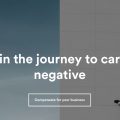
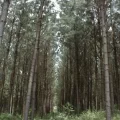 A new destructive business: Carbon credits from tree plantations
A new destructive business: Carbon credits from tree plantations
 East Africa poised to monitor carbon emission
East Africa poised to monitor carbon emission
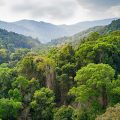 The Rush for Carbon Concessions: More Land Theft and Deforestation
The Rush for Carbon Concessions: More Land Theft and Deforestation
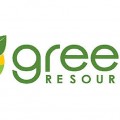 Uganda: Local communities claim they are not benefiting from Green Resources’ subsidiary’s carbon credit initiative; incl. company’s comments
Uganda: Local communities claim they are not benefiting from Green Resources’ subsidiary’s carbon credit initiative; incl. company’s comments

A decade of displacement: How Uganda’s Oil refinery victims are dying before realizing justice as EACOP secures financial backing to further significant environmental harm.

Carbon Markets Are Not the Solution: The Failed Relaunch of Emission Trading and the Clean Development Mechanism

Govt launches Central Account for Busuulu to protect tenants from evictions

Top 10 agribusiness giants: corporate concentration in food & farming in 2025

Uganda’s top Lands Ministry official has been arrested and charged with Corruption and Abuse of Office, a significant event that will have far-reaching implications for land governance in the country.

A decade of displacement: How Uganda’s Oil refinery victims are dying before realizing justice as EACOP secures financial backing to further significant environmental harm.

Govt launches Central Account for Busuulu to protect tenants from evictions

Environmentalists raise red flags over plan to expand oil palm fields in Kalangala

Innovative Finance from Canada projects positive impact on local communities.
Over 5000 Indigenous Communities evicted in Kiryandongo District
Petition To Land Inquiry Commission Over Human Rights In Kiryandongo District
Invisible victims of Uganda Land Grabs
Resource Center
- LAND GRABS AT GUNPOINT REPORT IN KIRYANDONGO DISTRICT
- RESEARCH BRIEF -TOURISM POTENTIAL OF GREATER MASAKA -MARCH 2025
- The Mouila Declaration of the Informal Alliance against the Expansion of Industrial Monocultures
- FORCED LAND EVICTIONS IN UGANDA TRENDS RIGHTS OF DEFENDERS IMPACT AND CALL FOR ACTION
- 12 KEY DEMANDS FROM CSOS TO WORLD LEADERS AT THE OPENING OF COP16 IN SAUDI ARABIA
- PRESENDIANTIAL DIRECTIVE BANNING ALL LAND EVICTIONS IN UGANDA
- FROM LAND GRABBERS TO CARBON COWBOYS A NEW SCRAMBLE FOR COMMUNITY LANDS TAKES OFF
- African Faith Leaders Demand Reparations From The Gates Foundation.
Legal Framework
READ BY CATEGORY
Newsletter
Trending
-
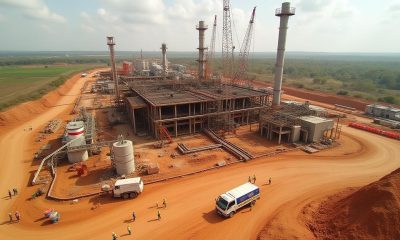
 MEDIA FOR CHANGE NETWORK1 week ago
MEDIA FOR CHANGE NETWORK1 week agoA decade of displacement: How Uganda’s Oil refinery victims are dying before realizing justice as EACOP secures financial backing to further significant environmental harm.
-
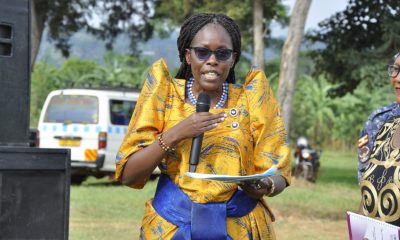
 MEDIA FOR CHANGE NETWORK1 week ago
MEDIA FOR CHANGE NETWORK1 week agoGovt launches Central Account for Busuulu to protect tenants from evictions
-

 WITNESS RADIO MILESTONES2 weeks ago
WITNESS RADIO MILESTONES2 weeks agoTop 10 agribusiness giants: corporate concentration in food & farming in 2025
-
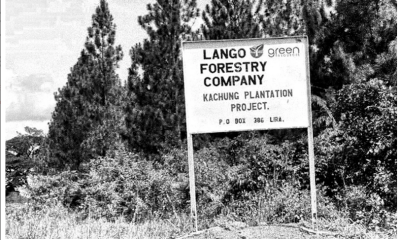
 MEDIA FOR CHANGE NETWORK1 week ago
MEDIA FOR CHANGE NETWORK1 week agoCarbon Markets Are Not the Solution: The Failed Relaunch of Emission Trading and the Clean Development Mechanism
